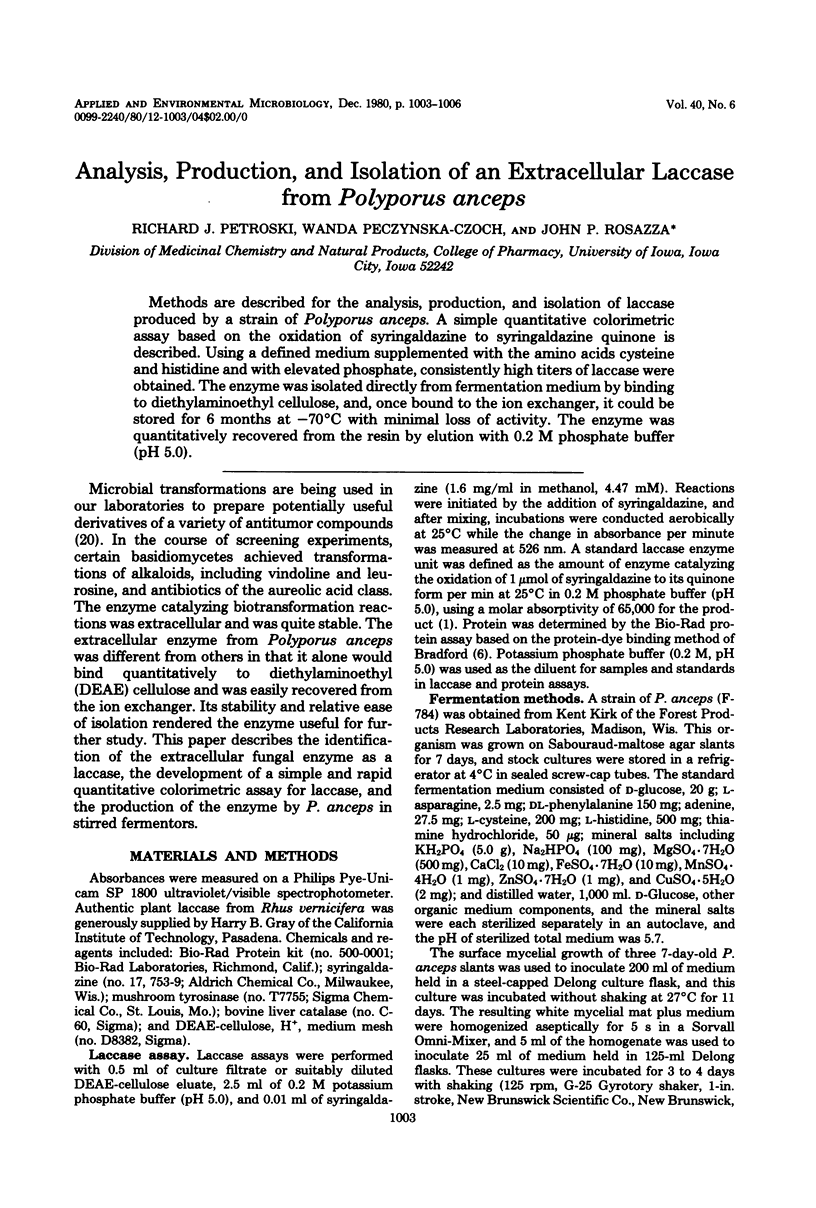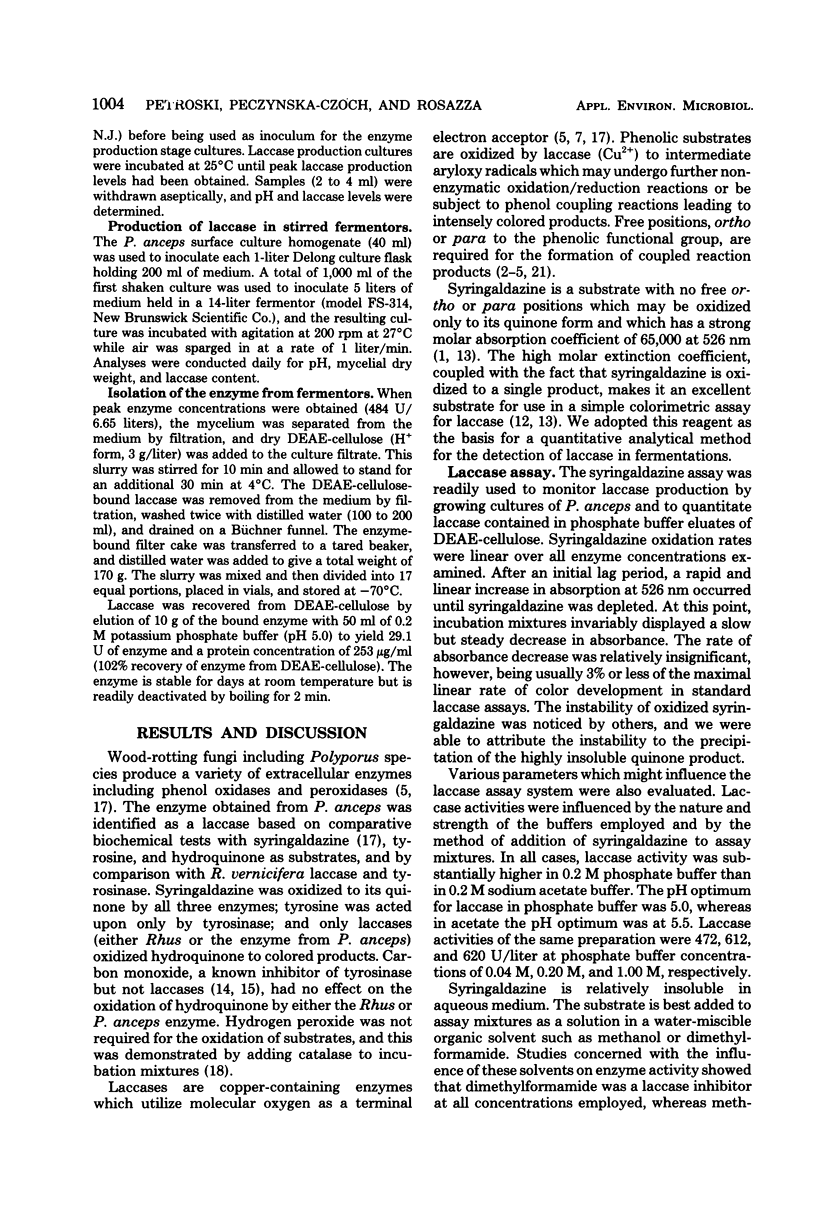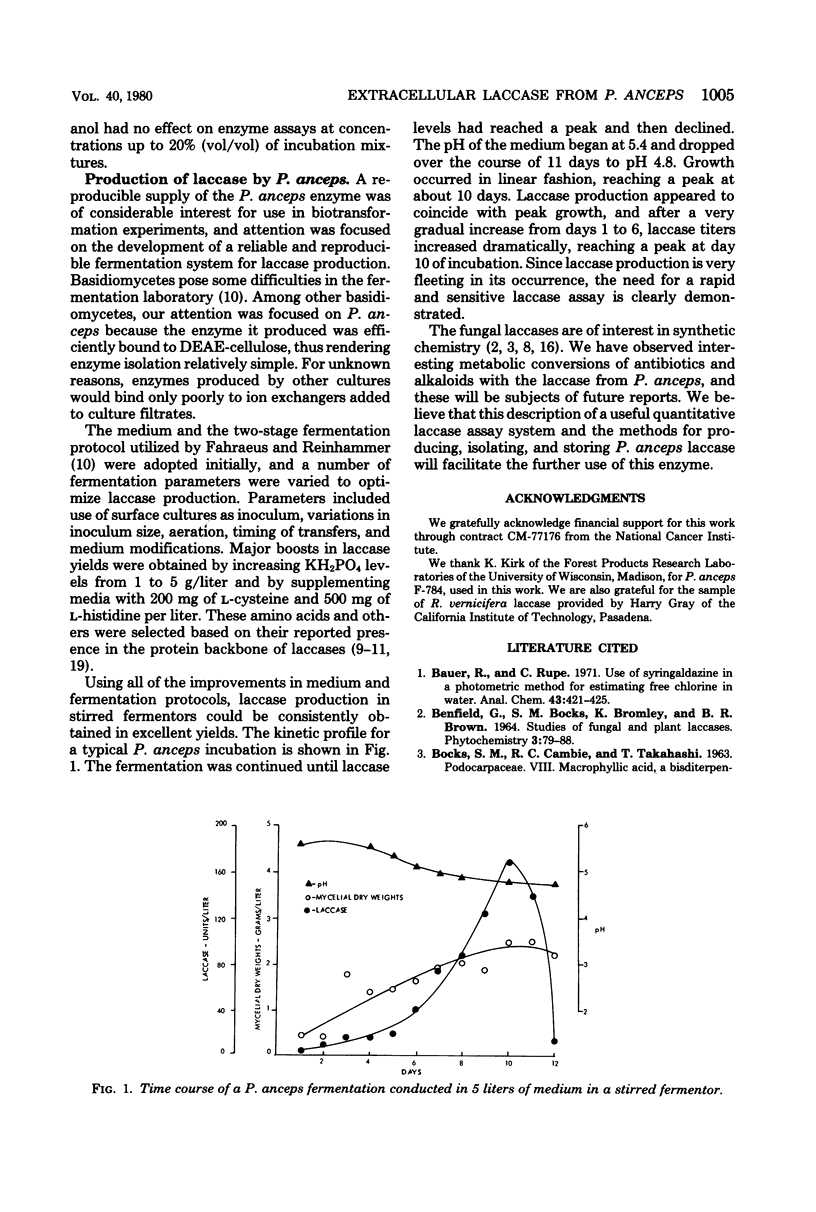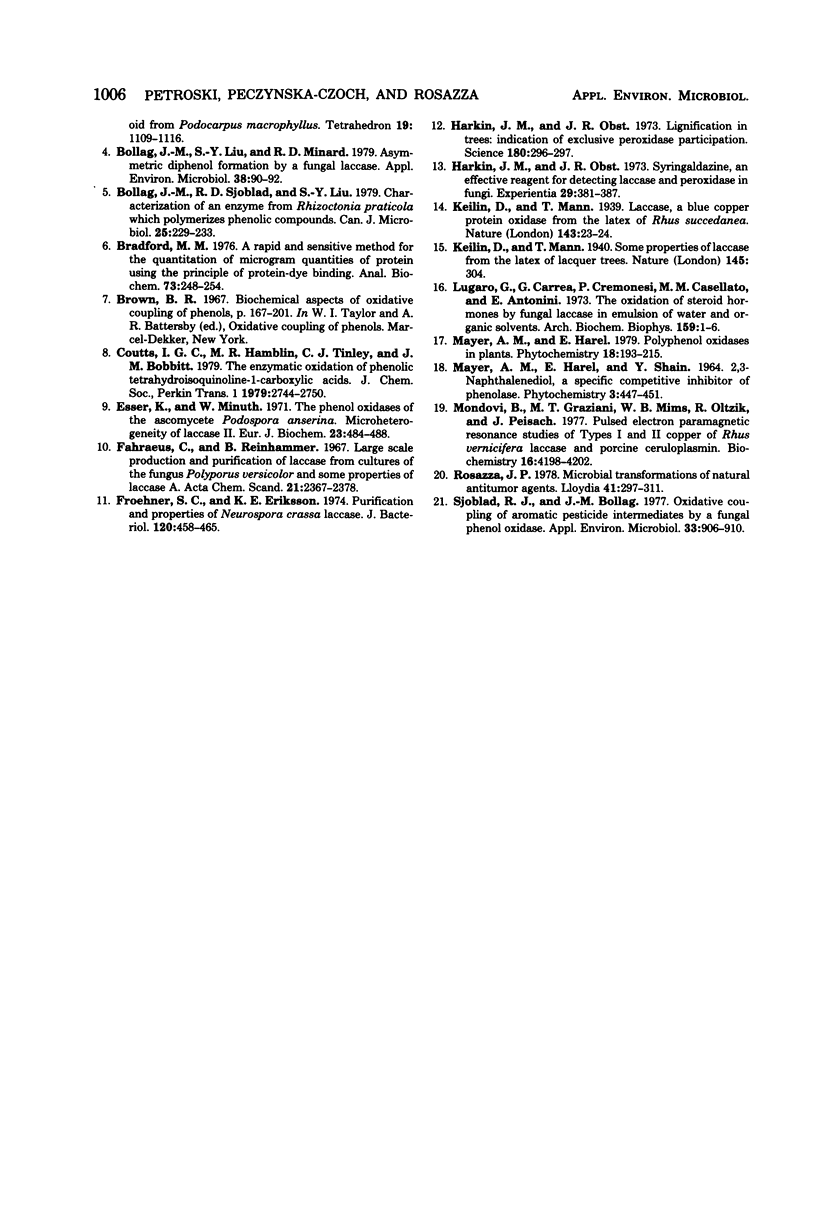Abstract
Methods are described for the analysis, production, and isolation of laccase produced by a strain of Polyporus anceps. A simple quantitative colorimetric assay based on the oxidation of syringaldazine to syringaldazine quinone is described. Using a defined medium supplemented with the amino acids cysteine and histidine and with elevated phosphate, consistently high titers of laccase were obtained. The enzyme was isolated directly from fermentation medium by binding to diethylaminoethyl cellulose, and, once bound to the ion exchanger, it could be stored for 6 months at -70°C with minimal loss of activity. The enzyme was quantitatively recovered from the resin by elution with 0.2 M phosphate buffer (pH 5.0).
Full text
PDF



Selected References
These references are in PubMed. This may not be the complete list of references from this article.
- Bollag J. M., Liu S. Y., Minard R. D. Asymmetric diphenol formation by a fungal laccase. Appl Environ Microbiol. 1979 Jul;38(1):90–92. doi: 10.1128/aem.38.1.90-92.1979. [DOI] [PMC free article] [PubMed] [Google Scholar]
- Bollag J. M., Sjoblad R. D., Liu S. Y. Characterization of an enzyme from Rhizoctonia praticola which polymerizes phenolic compounds. Can J Microbiol. 1979 Feb;25(2):229–233. doi: 10.1139/m79-035. [DOI] [PubMed] [Google Scholar]
- Bradford M. M. A rapid and sensitive method for the quantitation of microgram quantities of protein utilizing the principle of protein-dye binding. Anal Biochem. 1976 May 7;72:248–254. doi: 10.1016/0003-2697(76)90527-3. [DOI] [PubMed] [Google Scholar]
- Esser K., Minuth W. The phenoloxidases of the ascomycete Podospora anserina. Microheterogeneity of laccase II. Eur J Biochem. 1971 Dec 10;23(3):484–488. doi: 10.1111/j.1432-1033.1971.tb01644.x. [DOI] [PubMed] [Google Scholar]
- Froehner S. C., Eriksson K. E. Purification and properties of Neurospora crassa laccase. J Bacteriol. 1974 Oct;120(1):458–465. doi: 10.1128/jb.120.1.458-465.1974. [DOI] [PMC free article] [PubMed] [Google Scholar]
- Fåhraeus G., Reinhammar B. Large scale production and purification of laccase from cultures of the fungus Polyporus versicolor and some properties of laccase A. Acta Chem Scand. 1967;21(9):2367–2378. doi: 10.3891/acta.chem.scand.21-2367. [DOI] [PubMed] [Google Scholar]
- Harkin J. M., Obst J. R. Lignification in trees: indication of exclusive peroxidase participation. Science. 1973 Apr 20;180(4083):296–298. doi: 10.1126/science.180.4083.296. [DOI] [PubMed] [Google Scholar]
- Lugaro G., Carrea G., Cremonesi P., Casellato M. M., Antonini E. The oxidation of steroid hormones by fungal laccase in emulsion of water and organic solvents. Arch Biochem Biophys. 1973 Nov;159(1):1–6. doi: 10.1016/0003-9861(73)90422-0. [DOI] [PubMed] [Google Scholar]
- Mondoví B., Graziani M. T., Mims W. B., Oltzik R., Peisach J. Pulsed electron paramagnetic resonance studies of types I and II coper of Rhus vernicifera laccase and porcine ceruloplasmin. Biochemistry. 1977 Sep 20;16(19):4198–4202. doi: 10.1021/bi00638a011. [DOI] [PubMed] [Google Scholar]
- Sjoblad R. D., Bollag J. M. Oxidative coupling of aromatic pesticide intermediates by a fungal phenol oxidase. Appl Environ Microbiol. 1977 Apr;33(4):906–910. doi: 10.1128/aem.33.4.906-910.1977. [DOI] [PMC free article] [PubMed] [Google Scholar]


